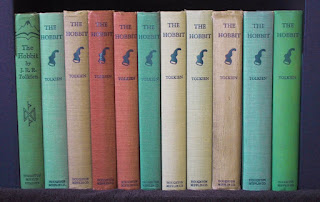 This was a book I picked up at a local library’s Used Book sale. World War II has fascinated me, especially the Royal Air Force during the Battle of Britain. I chose this book for the subject matter and was not disappointed. The book is a large softcover with glossy pages, while the author has a clear and easy style that allows the reader to understand both strategic decisions and the experiences of the men in the cockpits of the Royal Air Force.
This was a book I picked up at a local library’s Used Book sale. World War II has fascinated me, especially the Royal Air Force during the Battle of Britain. I chose this book for the subject matter and was not disappointed. The book is a large softcover with glossy pages, while the author has a clear and easy style that allows the reader to understand both strategic decisions and the experiences of the men in the cockpits of the Royal Air Force.
The book is divided into five chapters. The first, appropriately titled “The First Taste of Combat” shows the RAF during the “Phony War” and the evacuation of Dunkirk. Special sections in this chapter discuss the training of RAF pilots, manufacture of aircraft, and a color gallery of the many planes deployed by the RAF in 1940 such as Spitfires, Hurricanes, and Wellingtons.
Following the battle and evacuation of Dunkirk, Hitler planned to invade Great Britain. The RAF had to stop him from gaining air supremacy, and the next chapter “The Battle for Survival” covers the clashes between the two. But there were clashes between the British commanders as well, as Trafford Leigh-Mallory and Sir Hugh Dowding disagreed about tactics. But they both desired to defeat the German foe, and Spitfires and Hurricanes scrambled to intercept German raiders. The RAF gained victory, and the book pays tribute to the fighter pilots, their dedicated ground crewmen, and the many remarkable WAAFs (Women’s Auxiliary Air Force) who manned Britain’s radar network. Special sections include information about the radar network and a collection of rare air-to-air photos of the Battle of Britain.
 |
A recruitment poster for the Womens'
Auxiliary Air Force |
After victory in the Battle of Britain, the RAF turned to the offensive: attacking German targets. The mighty battleship Bismarck was crippled by a Swordfish biplane and aircraft hunted German U-Boats—though their bombs needed more power to destroy submarines. The book recounts an amusing story when a British plane accidently bombed a British submarine (HMS Snapper) and scored a direct hit, shattering four light bulbs. On land, too, the British hit German cities, notably Cologne with Operation Millennium, a raid of 1,000 bomber aircraft. The chapter also included a special showcase for the Porcupine, a German nickname for the Sunderland flying boat.
Of course, World War II expanded throughout the entire world, and the chapter “Defending the Empire’s Distant Skies” tells of the pilots who served Britain’s vast empire. North Africa, Malta, Greece, and Burma each required pilots to battle the Axis in the air. The defense of Malta is legendary, and several of its flying heroes are highlighted. And in the special section, we see RAF aircraft of 1943-45, including the Typhoon, Lancaster, and Meteor.
But the defeat of Germany was the first priority, and the RAF continued to pound the Nazi territory. New aids were developed for bomber crews, such as Oboe (direction-finding stations to guide bombers), and Window (strips of tin foil to confuse enemy radar). While factories, cities like Berlin, and the experimental plant at Peenemunde were all bombed, the RAF’s most interesting mission was to destroy three dams on the Weser and Ruhr Rivers, releasing the water to flood the area and crippling hydroelectricity production. A special bomb was developed and No. 617 Squadron practiced to destroy them. Striking in May of 1944, two of the dams were destroyed and the squadron earned their proud nickname, the “Dam Busters.” Special features include “Back to Burma,” a look at the RAF’s contribution to the liberation of that country, and a gallery of RAF heroes.
 |
| The frontpapers of the book contain this beautiful painting |
This book is an excellent, easy-to-read, non-technical summary of the RAF’s role in World War II. It is lavishly illustrated with photos, paintings, and maps. The series “The Epic of Flight” often turns up in library sales, and it costs about $3.00 new on Amazon. Definitely pick up a copy if you have any interest in World War II or the Royal Air Force.
Star Rating: 5/5 stars.






































